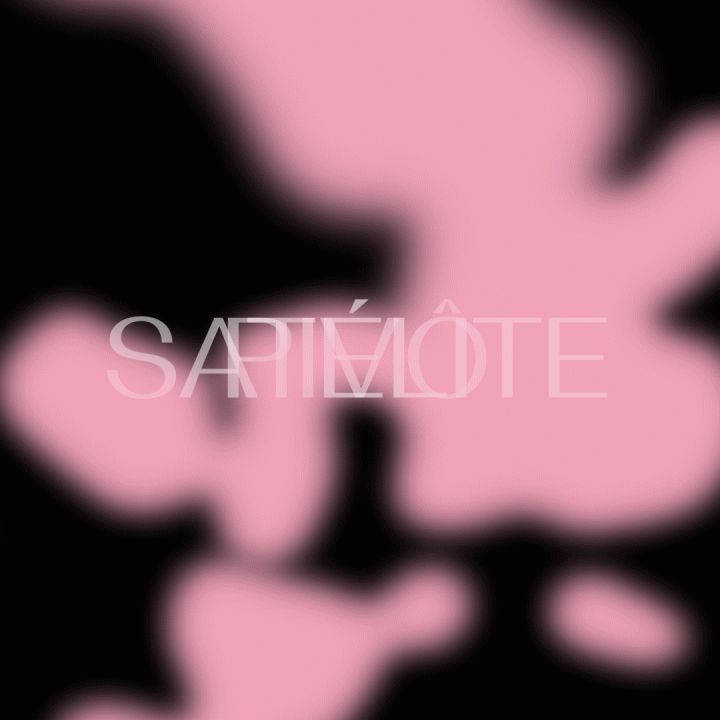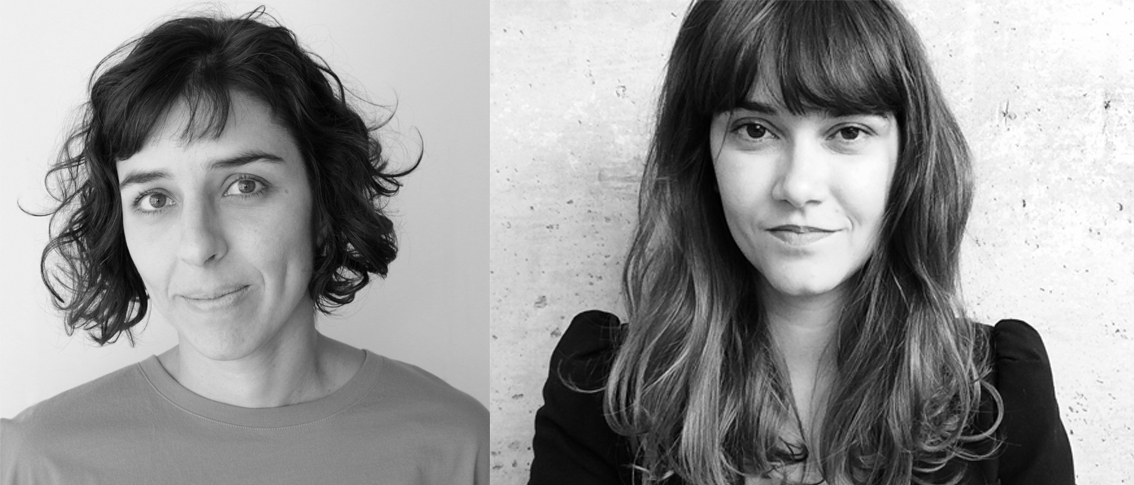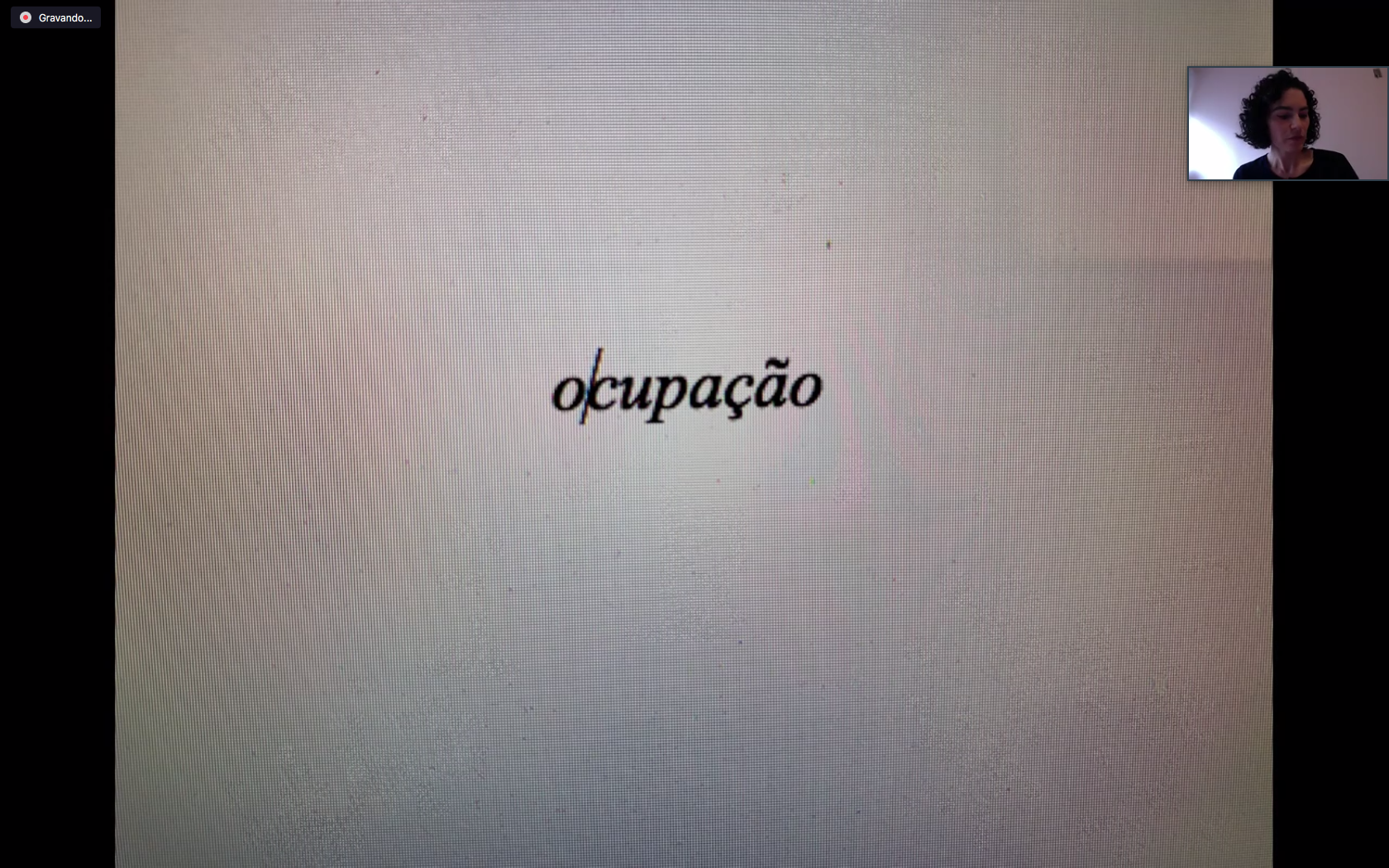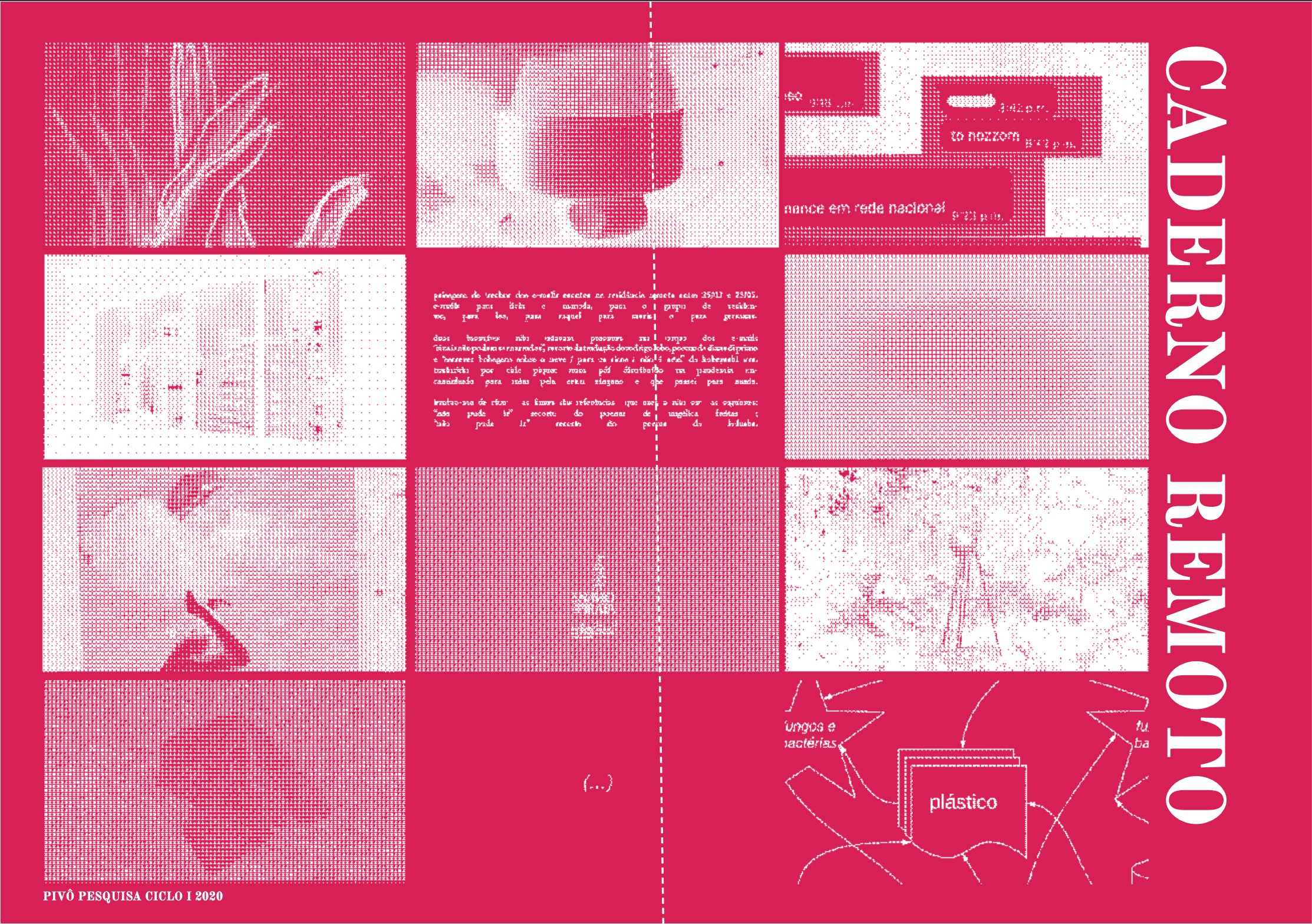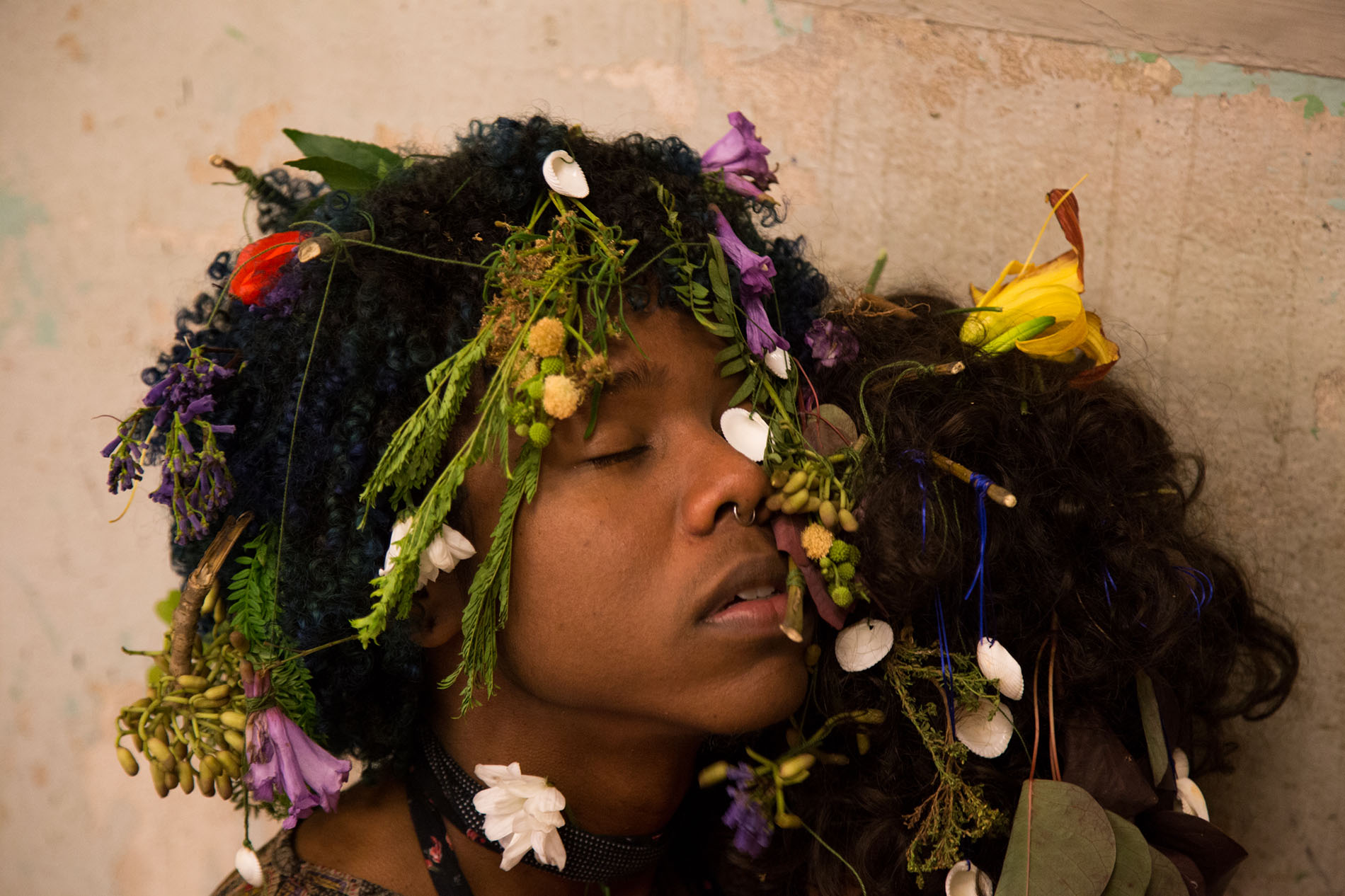

Curated by Diane Lima, Os dias antes da quebra [The Days Before the Crash] is an online exhibition launching Pivô Satellite #1. From July 24, artists Rebeca Carapiá (Bahia), biarritzzz (Pernambuco), Diego Araúja (Bahia) and Raylander Mártis dos Anjos (Minas Gerais) will be occupying the digital platform hosted by Pivô’s website for the duration of a month each. Rebeca Carapiá’s installation Lightning Rods for Confusing Energies is kicking off the project. The Days Before the Crash draws on the work of a group of racialized/dissident artists whose practices were already discussing and denouncing the current state of social fracture that we have been witnessing in an even more dramatic way since the start of the pandemic. The project calls on decolonial curatorial practices based on the current research developed by independent curator, researcher and critic Diane Lima. As well as her collaboration with Pivô Satellite, Lima is also on the curatorial team of the 3rd Frestas: Art Triennial at SESC-SP and she has curated the Valongo International Image Festival since 2018.
Leo Felipe: The fields of art and science were able to predict the crash, whilst the political and economic fields did not foresee it (which makes us wonder if this incapacity is, in fact, the root cause of the problem). It is evident that science plays/will play a decisive role in the reconstruction after the crash. What is the role of art in this new scenario? What can artists experienced with “postponing the imminence of their own breakdown” show us?
Diane Lima: Exactly. Art and science, as modern institutions that operate within the regime of colonial civilizing disciplines and, therefore, of the same capitalism that brought us here, will continue to play the role of creating demands to guarantee their own existence. As such, they are useful in this reflection as a way of exposing the ethical contradiction to which we are all subjected as members of the artistic-working class: art, as a production chain, did not save us nor will save us in the future. We cannot talk about the art system as a space of freedom when our efforts have been precisely to expand its limits and frameworks. Thus, by choosing to create artistic manifestations based on non-Eurocentric cosmologies, the system has always been a space of negotiation, secrecy and struggle for us. This is revealed, for example, in the history of Afro-Brazilian art and in the poetics and politics of re-signification and enunciation that artists, curators, researchers and lecturers who have inhabited different historical spaces have been articulating and leaving behind as legacy. In light of this perspective, I think that if there is a new space for us, the role of art will not be new: we will continue to create spaces of collectivity, technologies of survival, escape and negotiation strategies, operating both outside and inside the core of these institutionalized spaces.
In this sense, acting as an epilogue for a story written by different artists and expanded into different chapters, The Days Before the Crash brings to Pivô Satellite a propositional reflection on how the coronavirus has shaken our linear and productive structure of time in a viral and atomized way. By questioning the relations between continuity and discontinuity already in dispute in certain historiographical narratives, this exhibition proposes a gaze that suggests a return to what was forecasted, speculated and denounced before the pandemic. As such, the exhibition refuses the universalist discourses that negate the history of extreme vulnerability and precariousness that was already the norm in the lives of a significant number of social groups. At the same time, it expands the debate about how hierarchies of oppression that define the inseparability of class, race, gender and sexuality markers become very apparent in the current health crisis, weakening even further the points of access to artist-workers who continue to struggle to get by as an artistic class.
If this pandemic means that we are living within the limits of our pockets and bodies, this exhibition documents and presents a set of tools, escape routes and strategies of collective emancipation that had already been articulated in the research and practice of our four contemporary artists. Rebeca Carapiá’s Lightning Rods for Confusing Energies are sculptures made of iron, copper and 3D modelling that emerged as protection objects in a dream the artist recently had. The urgency of communicating in a common language manifested in low-fi pixels, “prime weapons of local geopolitics”, appears in biarritzzz’s Meme Pedagogies. The search for “creating a language that is not born out of trauma and violence” features in International Creole Laboratory by Diego Araúja. And the interest in “meetings and gatherings of people based on the study of coral reefs” is examined in The Production of Coralities by Raylander Mártis.
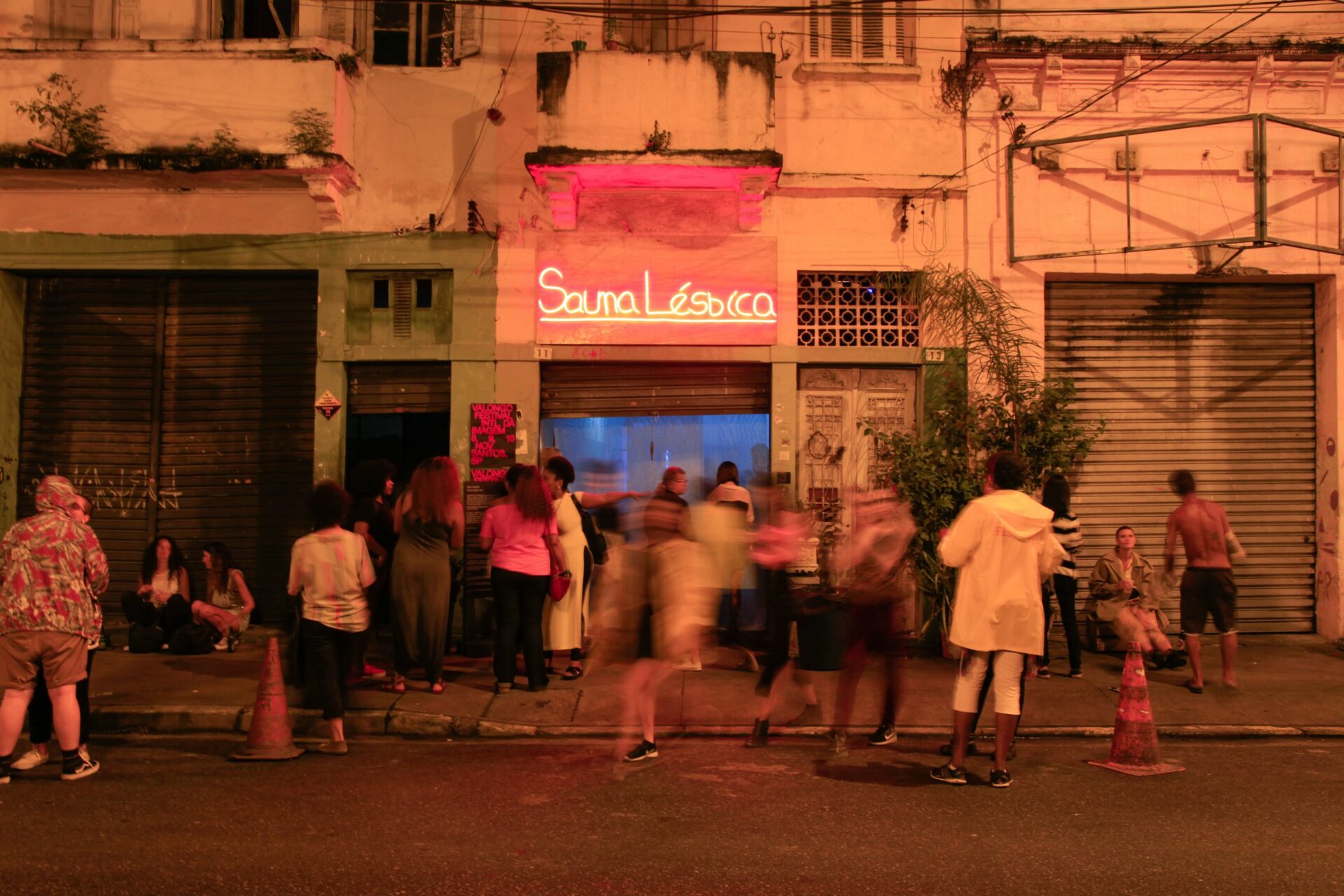
LF: The aim of Pivô Satellite is to contribute towards the creation of a support network dedicated to Brazilian artists in this adverse moment. Perhaps there are still a lot of people, inside and outside the visual arts circuit, who have no idea of the economic precariousness experienced by a significant portion of the local art class. How can this network be strengthened?
DL: In 2018, I was invited by the editor and philosopher Sueli Carneiro to publish a text in the journal Revista Internacional de Direitos Humanos, which delineated the concept of a decolonial or antiracist curatorial practice, in which our knowledge perspectives are taken into consideration, impacting not only on the aesthetic field but also introducing ethical institutional frameworks. Since then, I have been fine-tuning this definition, but I think it continues to help me to think beyond identitarianism, as a practical manual for the implementation of institutional politics and a set of survival strategies for us, curators and artists.
When we talk about a support network, I think about Pivô Satellite and I see that our challenge is to carry on implementing the same ethics in line with what Tiganá Santana defined as the difference between justice and just-ness. To seek negotiations that are not “just” in the sense of justice, but in the sense of just-ness is, in my view, what happens when we have the mass presence of racialized and dissident artists who are able to access politics of redistribution, which include compensations that are contractually coherent, and who participate in the chain of symbolic and productive value within institutions, without losing sight of how asymmetrical the equation of added value is in ethical and conceptual terms when it is diluted in the systemic and unpayable debt accumulated throughout time.
In addition, I think that not knowing should no longer be an option. This is what precedes any possibility of negotiation and dialogue. In O nascimento da forma [The Birth of Form], an unpublished text, which I presented as a seminar at UFRB at the end of last year, I argue that if we understand that each and every initiative committed to decoloniality, its exercises, gestures and acts must draw on the premise of the creation of FORMS that do not exist yet, part of our challenge is, therefore, to create enabling conditions so the changes that are trying to gain form in the world achieve their ultimate potential.
In other words, the network can only be strengthened through the creation of the structural conditions necessary for a movement to happen. For those who want to commit to a decolonial or antiracist agenda in contemporary art, the first thing we need to do it is to put an end to the discourse that says: we don’t know, we have no knowledge of, or there aren’t any, black artists or curators. And the only way to achieve this is to invest in both education and history.
Anchored in the agenda of black women’s movements in the last decades, this discussion has been my focus since AfroTranscendence, a project from 2015. Even though it hasn’t been well documented, it continues to be one of the most important things I have ever done as it precisely unites education and history, which has permeated everything I have done since.
As far as this issue is concerned I am always quite emphatic, as I think this is the only way of making sure 1) that a new generation of racialized and dissident artists, curators and researchers continues to exist; 2) that artists/curators/masters from other generations are recognized and have their knowledge organized and made available; and 3) that knowledge of those who are no longer amongst us is not only posthumously accessed but also formalized as history. Here, I would like to introduce an image to help us visualize this issue: in a photo found in the ZUMVI Archive, two unnamed black women, during a demonstration on 20th November (no year) in Salvador, are holding a protest sign that reads: “For an education that interests black people”. For those who don’t know it, ZUMVI is a photographic archive organized by the photographer Lázaro Roberto, which uses images to narrate the memories of 30 years of black resistance in Bahia. I had the great honor of curating the exhibition ZUMVI – A gente se acende é nos outros [ZUMVI – We Ignite Ourselves in the Others] at the Valongo International Image Festival 2018.
I think that it is this relationship between education and history, which is unfortunately only preserved by tremendous efforts such is the case of ZUMVI, that we must foment. It is urgent to organize, document, publish and historically inscribe our practices in such a way that we can turn our history into educational and curricular repertoires not only for the field of art, but also for other fields of knowledge that are key for the formation of Brazilian society. This task also includes questioning the way we currently make history.
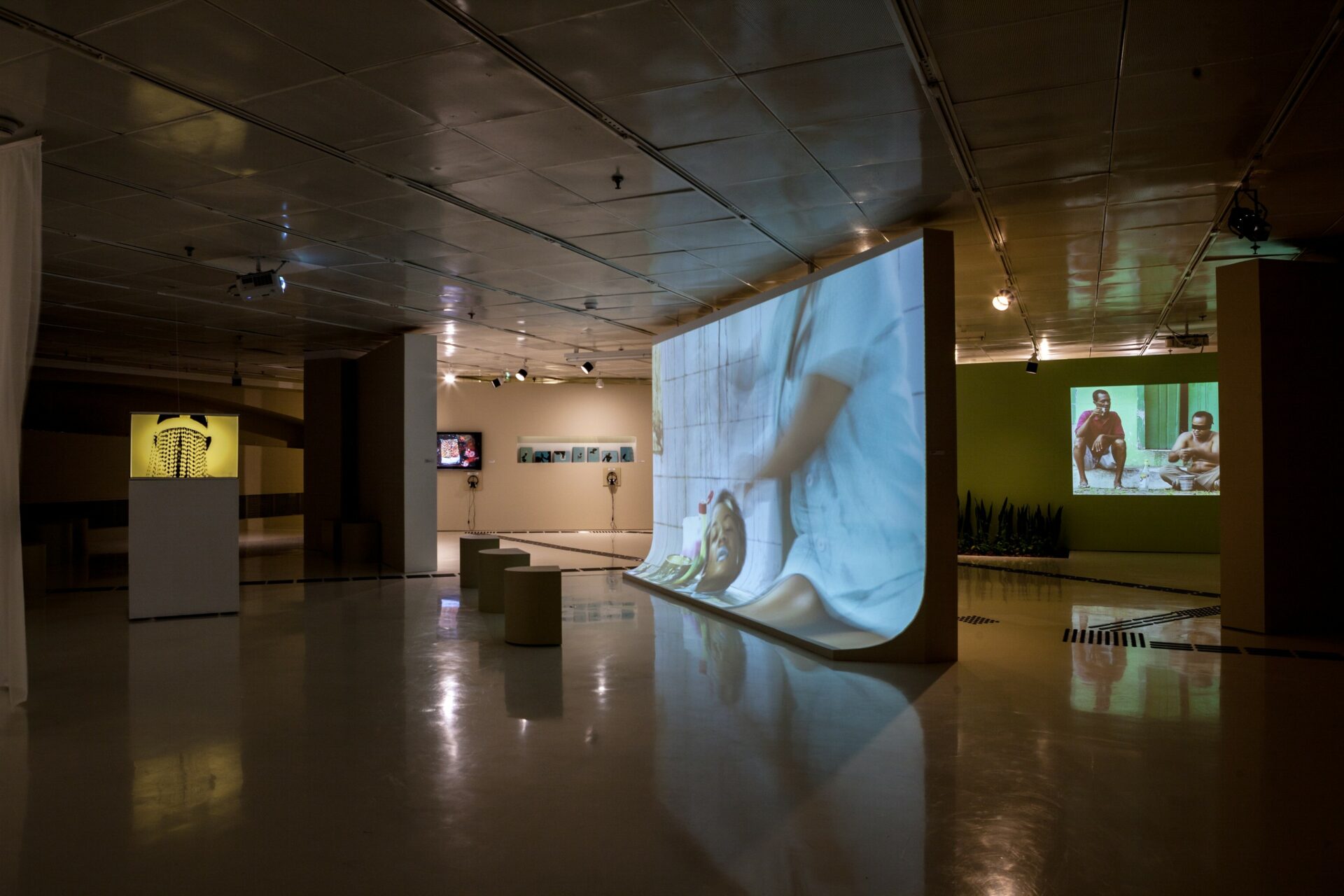
LF: What needs to be taken into account when thinking about an online exhibition?
DL: In this process with Pivô Satellite it is crucial to understand how we can test the limits of artistic objects in the virtual environment. This does not mean to translate or convert them by simulating a physical space. The challenge is to expand this materiality, above all by embracing that which is produced as difference, plasticity and critique, when the digital and virtual worlds meet. This is the key point I am taking into consideration in the dialogue and interaction with the artists, since the exhibition also aims to expose the contradictions that exist within conventional exhibition poetics and politics, taking into account both the utopias of the internet and a critique of the advancement of techno-normative capitalism in the 21st century. I believe that, in this sense, we need to understand that the internet does not create the image of an artistic object, but its event. This is why the concept of exhibition as performance, which is conjured in the practice of the four invited artists, and has defined the criteria for the selected artworks, is so powerful.
The risk exposed by The Days Before the Crash, in the context of an online exhibition, is to what extent the effects of the pandemic can change exhibition frameworks and what these changes in the field of art will mean for a group of non-privileged people. Some artists, for instance Rebeca Carapiá and biarritzzz, approach this subject with a hint of irony and humor. It is worrying to think that we are moving towards the downloadization of life and that the pandemic has created the ideal conditions for the implementation of, and experimentation with, a way of life that could change the way we feel and live in the world in terms of physical and cognitive materiality. Do I feel anxious about this? Probably. However, there is nothing fictional about it. There is, for instance, a vocabulary being generated and getting closer to us, which has originated in the vast repertoire of digital art. Given our subordination to profit, the market is already adapting to the new environment, including a wider interest in digital works and a possible moving away from works originating from body and earth. Despite the several interests at play and the fact that this rupture is unlikely to happen instantaneously, there is a need for a formal and critical debate, above all, as far as points of access are concerned.
LF: The identitarian/decolonial debate has had a huge influence on political and cultural fields in the last decade, which is extremely positive. However, Asad Haider in Mistaken Identity (Verso, 2018) denounces the way neoliberalism co-opts identity politics in order to undermine the possibility of collective action for the benefit of individualism. How can we articulate a collective struggle in this direction, preventing the agenda from being instrumentalized and converted into marketing?
DL: I see that – historically – the debates around identity politics and decoloniality are related. However, they articulate and claim different types of knowledge and practice; they happen in different geographical contexts and historical times. It would be necessary to take some time to outline a non-linear genealogy that could explain these debates as epistemological apparatuses. However, the point is that both projects, as very eloquently pointed out by Silvio de Almeida, have not managed to effectively compromise or block the sociability of capitalism and its reproduction mechanisms. Even with the uncontestably revolutionary ground they have gained, if today both agendas are in need of historical revision, this is precisely due to capitalism’s ability to update itself both in terms of reproduction and expansion. In other words, it is due to our constant need to reinvent escape routes and analytical technologies that can help us diagnose and name the speed with which these procedures of violation are formalized.
Therefore, we are still making use of a series of similar theoretical and practical tools, which are crucial to our survival. We are also constantly updating them against several bodies of knowledge so we can establish a critical gaze and overcome the contradictions that precede our condition of living here and now. In negotiating our work force and vitality to modify these structures, it is my understanding that the most important element has been to ask our own questions.
LF: In your opinion, who are the most important thinkers and projects that can help us understand things that are at play when we talk about racialization and sexual and gender dissidence?
DL: As well as the people I have already mentioned, my understanding draws on an extensive bibliography that includes the teachings of Saidiya Hartman, Denise Ferreira da Silva, Carla Akotirene, Amanda Carneiro, Stela do Patrocínio, Hélio Menezes, Tavia Nyong’o, Thiago de Paula Souza and Jota Mombaça. Furthermore, I think we must see, and read, what the artists in this exhibition have to say. We must read what Rebeca Carapiá’s “words with air” are telling us; examine Raylander Mártis’ theories about the concept of “coralities”; study biarritzzz’s “meme pedagogies”; and learn Diego Araúja’s invented language.

 Português
Português